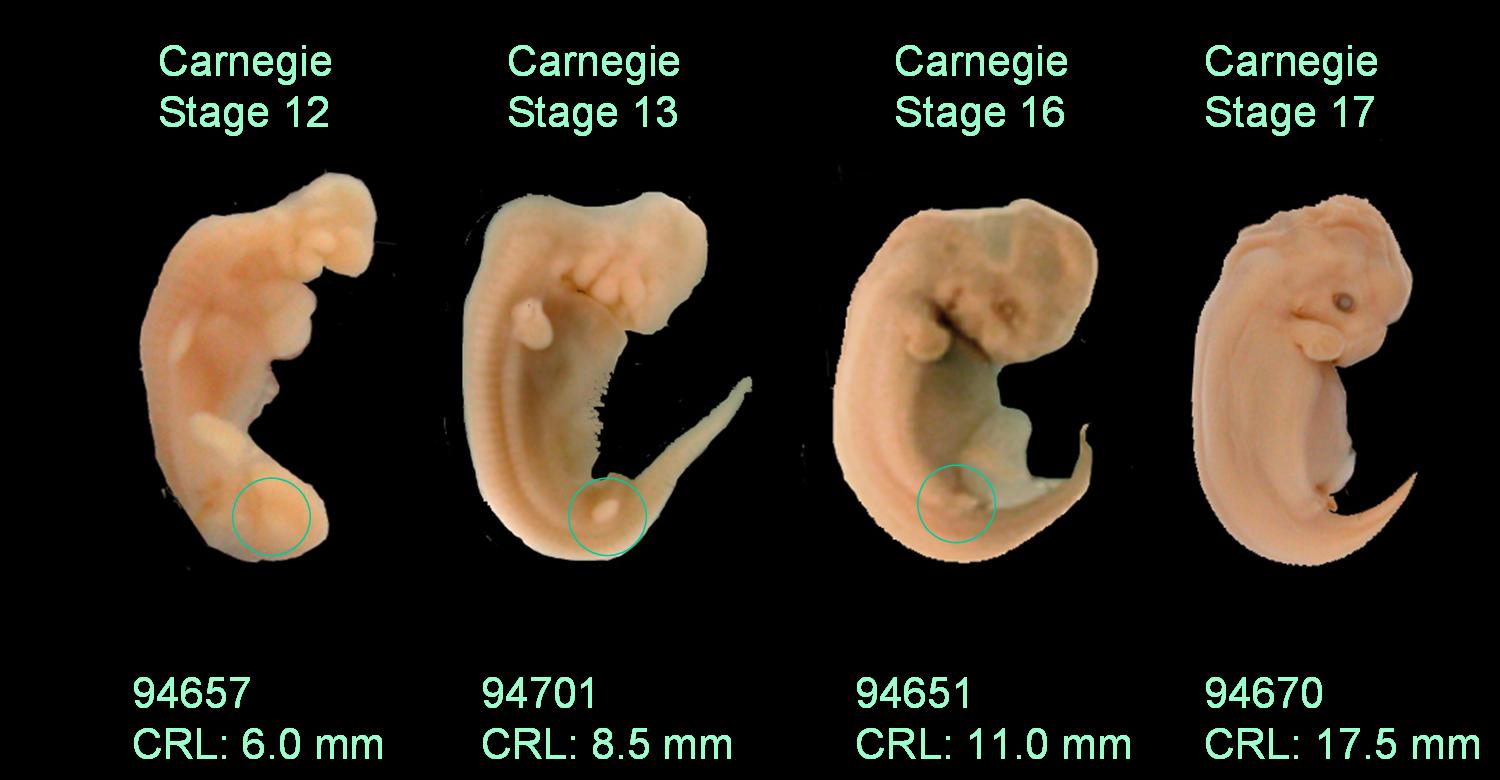Then, Pharyngula has some genetic research on cetacean limb formation here.
Finally, Dr. Tom Holtz from the University of Maryland's pet project, Dinosaur, has here compiled just this season's entries into his archosaurian compendium.

Embryology of a cetacean; of note is the development of the hind limbs/fins in the first three stages, which then atrophy and disappear in the last; the genetic component for the development of legs is still present, but inactivated, and this is essentially conclusive evidence pointing to the terrestrial origin of whales, dolphins, and porpoises










